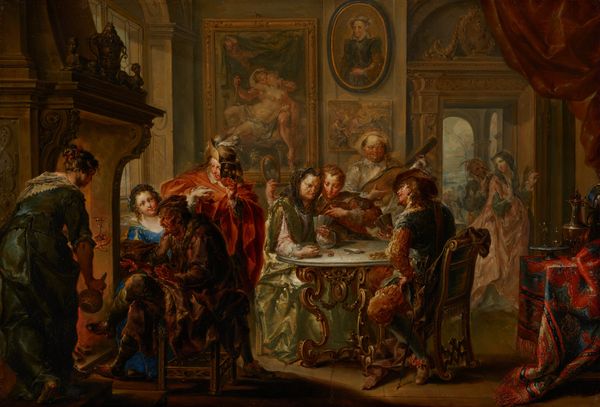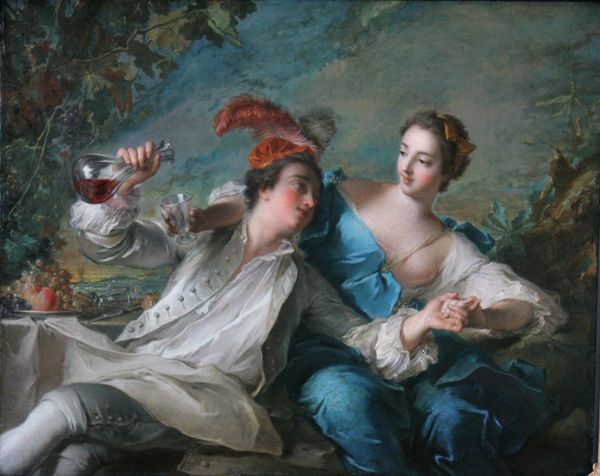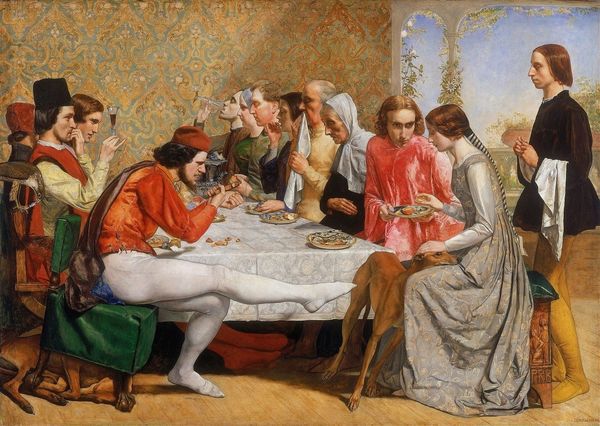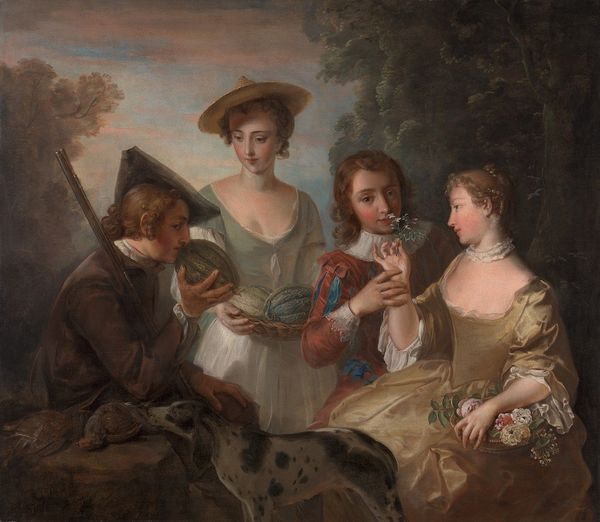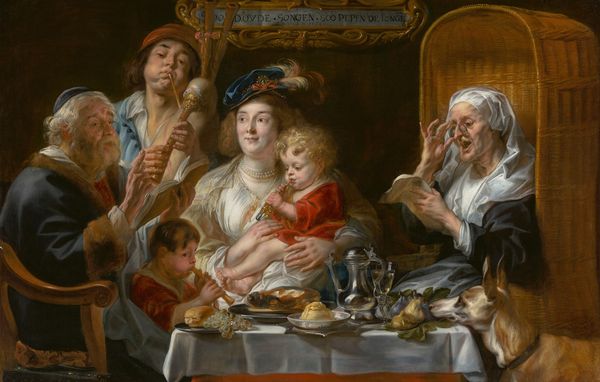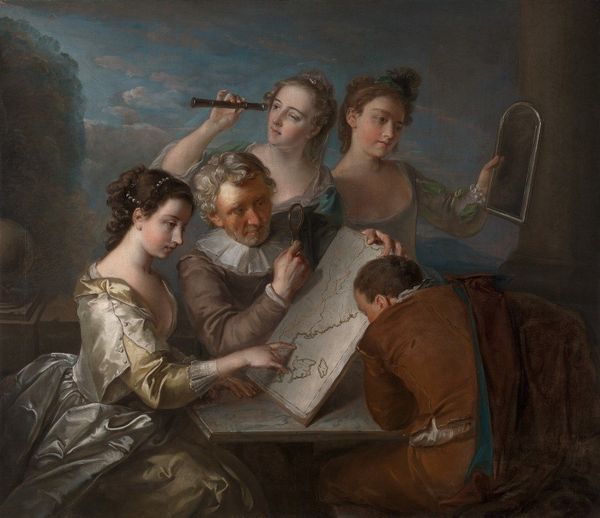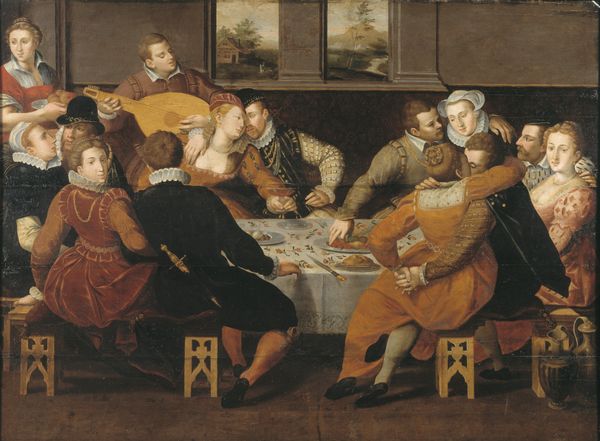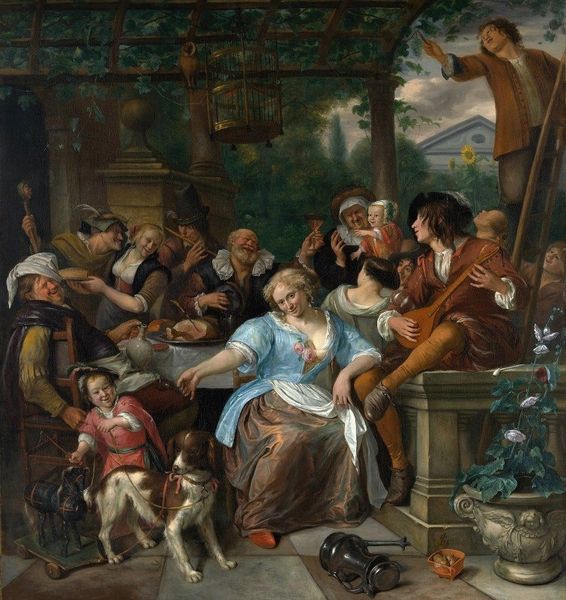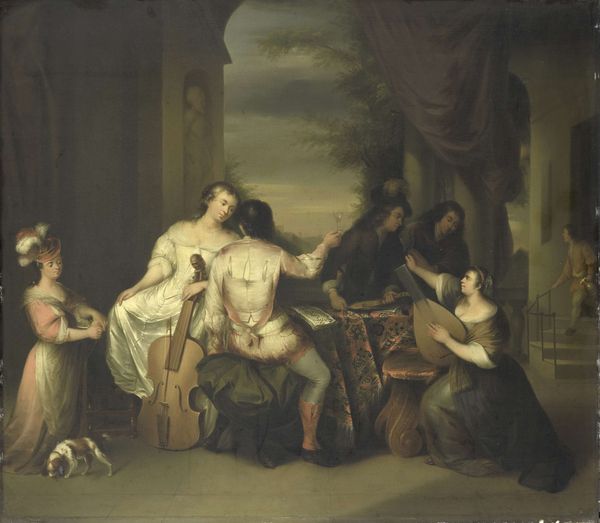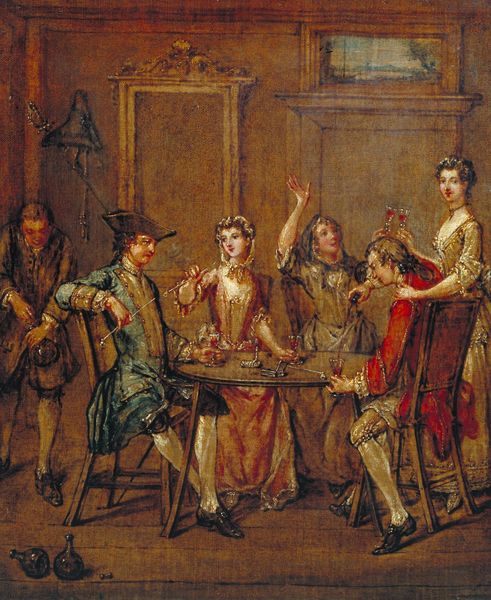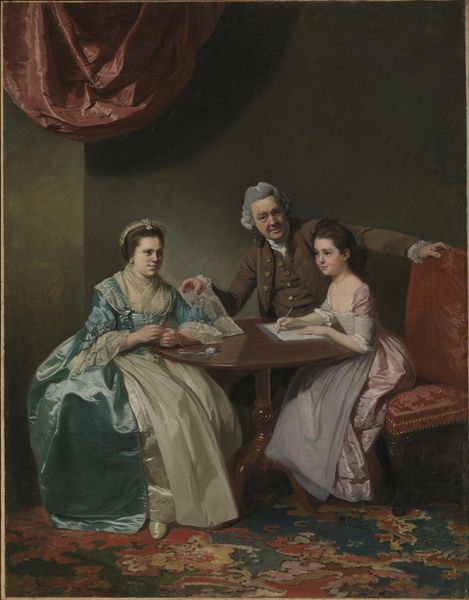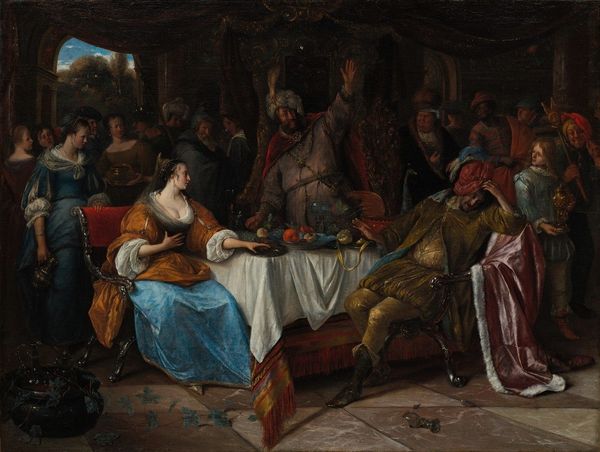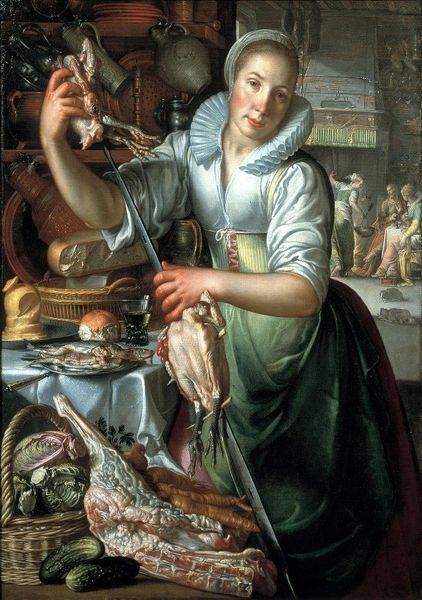
painting, oil-paint
#
portrait
#
allegory
#
painting
#
oil-paint
#
figuration
#
group-portraits
#
genre-painting
#
rococo
Copyright: Public Domain: Artvee
Curator: What strikes me first about this oil painting is the almost unsettling sweetness of the scene, like spun sugar threatening to dissolve. Editor: It's certainly an intriguing composition. This is Philippe Mercier's "The Sense of Taste," created between 1744 and 1747. He’s exploring the Rococo style, known for its frivolity and ornamentation, but through an allegorical lens, no less. Curator: Allegorical, yes! The figures lounging about a table laden with fruits and champagne...there’s an obvious embrace of indulgence. The rosy cheeks, the expectant gazes...It's pleasure distilled into pigment, wouldn't you say? Almost painfully polite, yet oozing an understated sexual tension. Editor: Precisely. These paintings often served as visual metaphors for the social mores of the elite. Here we have an image of consumption and leisure which must be understood within the broader historical context of colonialism, where exotic fruits and sugar symbolized status and power derived from exploitative labour practices. The presence of a Black servant also calls to mind the colonial ties of that time, suggesting that leisure and pleasure of this sort came at a great human cost. Curator: Right, right. But from a purely aesthetic angle—the play of light on satin, the drowsy postures, the way he catches the transparency of the glass— it's just remarkable, isn't it? Almost like catching a dream, a very beautiful but ethically problematic dream. Editor: The Rococo style can be deceptively charming, a visual feast concealing complex social inequalities. That smoothness, that gentle light, as you said, all risk obfuscating more sobering issues that need unpacking. The painting’s elegance also has a history. Curator: True. Maybe that unsettling feeling I sensed stems from this knowledge, now so clearly highlighted! Thank you. It changes how the art is perceived altogether. Editor: These dialogues, when engaged in with careful attention to power, can certainly disrupt surface readings of these beautiful, yet ultimately complicit artworks.
Comments
No comments
Be the first to comment and join the conversation on the ultimate creative platform.
